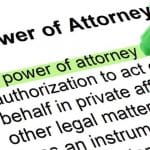Your Estate Planning Checklist
Estate planning is the process of arranging, during a person’s lifetime, for the management of a person’s assets and affairs when the person becomes incapacitated or dies. It is important to create a plan. It is equally important to periodically review and update the plan to keep up with your individual life events. As we enter 2021, below is your estate planning checklist.
Review and Update Your Beneficiary Designations
A beneficiary designation will override the terms of your Will or Trust. If you have a Will or Trust that gives to one person but a beneficiary designation that gives to another, then the beneficiary designation will control. If you have recently divorced and have your prior spouse listed as a beneficiary, then, upon your death, the asset will pass to the prior spouse. Make sure the beneficiaries listed are the people who you actually want to receive the asset.
Estate Planning Checklist 2 – Have Health Care Directives in Place
Health Care Directives, or, Advance Directives, allow you to appoint an agent who can make decisions for you in the event of incapacity. Having these documents in place ensures that your wishes regarding your health care and finances are carried out, even when you’re unable to make your wishes known.
The two most important documents in the Advance Directives packet are the Health Care Proxy and Durable Power of Attorney. There are also other documents that can supplement your advance directive. You can choose which documents to create, depending on how you want decisions to be made. These documents include:
- Living will
- HIPAA
- Appointment of Agent to Control Disposition of Remains
- Nomination of guardian
If you do not have Advance Directives in place, then your loved ones may need to commence a guardianship proceeding on your behalf, which can be a costly and lengthy venture.
Estate Planning Checklist 3 – Review Your Current Plan and Consider Updating it in Light of Your Specific Circumstances.
-
- If you are fortunate enough to be in the top 1% and have a taxable estate, then consider taking advantage of the lower interest rates by either creating a QPRT or GRAT.
- If you have had enough family drama this holiday season, and have realized that you do not want anybody involved in your life and do not want anybody to know your business, then consider Trust instead of a Will
- If you are starting 2021 as a new family or just had a new addition to your family, then consider a basic Will, Advance Directives, and Guardianship designation for the minor.
- If you are selling or acquiring property, please keep abreast of the changing tax laws to determine the most efficient and tax advantageous strategy.
Estate Planning Checklist 4 – Fund your Trust
After you have signed your Trust, you must fund it in order for it to be effective. Some people create trusts strictly as a probate avoidance vehicle. If you do not fund your Trust, then you will not avoid probate.
There are two basic ways to fund a Trust. The first way is to obtain change of ownership forms and transfer the asset into the name of the Trust. Typically, people transfer ownership of their brokerage accounts, CD’s, checking/savings, mutual funds, and real property, into their revocable trusts. The second way of “funding” a trust is to name the Trust as a beneficiary of the asset. Examples of when the Trust is named beneficiary is when the asset is life insurance or retirement accounts. Although the Trust does not take immediate control of the asset, the Trust will take immediate control of the asset at the moment of the Grantor’s death.
Create a Digital Asset Plan
You should take steps to ensure that your fiduciaries or family members can access your online accounts for various reasons, including, but not limited to accessing online bank and brokerage accounts, ensuring bills are paid and all subscriptions are canceled, preserving photos and memories, and deleting private data.
Digital estate planning is not as simple as including screen names and passwords in your will. In fact, because wills are made public when admitted to probate, putting that information in your will means that your financial or social media accounts could be at risk when your estate enters probate.
A better practice to create a digital estate plan could be to list the information in a separate document but refer to it in your Will. You can give your executor the power to access and dispose of these accounts, or you can name a separate individual as a “digital executor” to serve that purpose. Whatever your desire, it is important to discuss the matter with a qualified estate planning attorney before making any decisions.
We can help you properly think through your estate planning and draft a Will that will reduce the chances of a contest. Please contact us to discuss your estate planning needs.
For more information, please contact Guardianship, probate and estate planning attorney Regina Kiperman:
Phone: 917-261-4514
Email: rkiperman@rklawny.com
Or visit her at her office:
80 Maiden Lane
Suite 304
New York, NY 10038
This post is made available by the lawyer for educational purposes only as well as to give you general information and a general understanding of the law, not to provide specific legal advice. By using this site you understand that there is no attorney client relationship between you and the lawyer. The post should not be used as a substitute for competent legal advice from a licensed professional attorney in your state.
